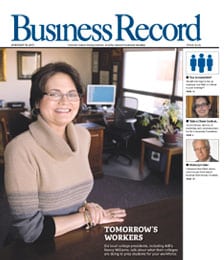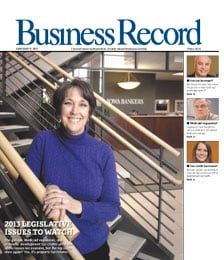The credits keep rolling for Iowa movie projects

.floatimg-left-hort { float:left; } .floatimg-left-caption-hort { float:left; margin-bottom:10px; width:300px; margin-right:10px; clear:left;} .floatimg-left-vert { float:left; margin-top:10px; margin-right:15px; width:200px;} .floatimg-left-caption-vert { float:left; margin-right:10px; margin-bottom:10px; font-size: 12px; width:200px;} .floatimg-right-hort { float:right; margin-top:10px; margin-left:10px; margin-bottom:10px; width: 300px;} .floatimg-right-caption-hort { float:left; margin-right:10px; margin-bottom:10px; width: 300px; font-size: 12px; } .floatimg-right-vert { float:right; margin-top:10px; margin-left:10px; margin-bottom:10px; width: 200px;} .floatimg-right-caption-vert { float:left; margin-right:10px; margin-bottom:10px; width: 200px; font-size: 12px; } .floatimgright-sidebar { float:right; margin-top:10px; margin-left:10px; margin-bottom:10px; width: 200px; border-top-style: double; border-top-color: black; border-bottom-style: double; border-bottom-color: black;} .floatimgright-sidebar p { line-height: 115%; text-indent: 10px; } .floatimgright-sidebar h4 { font-variant:small-caps; } .pullquote { float:right; margin-top:10px; margin-left:10px; margin-bottom:10px; width: 150px; background: url(http://www.dmbusinessdaily.com/DAILY/editorial/extras/closequote.gif) no-repeat bottom right !important ; line-height: 150%; font-size: 125%; border-top: 1px solid; border-bottom: 1px solid;} .floatvidleft { float:left; margin-bottom:10px; width:325px; margin-right:10px; clear:left;} .floatvidright { float:right; margin-bottom:10px; width:325px; margin-right:10px; clear:left;}
Mary-Kate Gales recently spent a week learning how to put gashes, bruises, beards and prosthetics on actors under the direction of a Los Angeles makeup artist whose experience includes working on “Pirates of the Caribbean,” “Girl, Interrupted” and “Teaching Mrs. Tingle.” This one-week intensive one-on-one course also taught Gales the skills of how to manage a production’s makeup department with the hope that she can capitalize on the increase in film activity in Iowa.
Gales is among a group of people finding new opportunities in the burgeoning movie industry that took off when Iowa passed the Iowa Film Promotion Act in 2007. Since then, Iowa has attracted $27.18 million in state spending from 11 films that have received $13.38 million in tax credits.
But Iowa leaders face a challenge if they want to build the industry to the scale found in New Mexico or Louisiana, the top film-producing states outside California and New York. The state has only enough trained people to work on one feature film at a time, and the production level is not high enough yet to encourage more Iowans to get trained or people with movie-making experience to move to the state. Limitations in the tax-credit program and a lack of knowledge about the program in smaller communities also are a challenge.
Still, Iowa is beginning to attract higher-budget flicks; most feature films shot in Iowa spend $3 million to $5 million here. The goal is to keep advancing to the point that Iowa regularly attracts major motion pictures, such as “Field of Dreams” and “The Bridges of Madison County,” which put the state on the map.
Once Iowa can attract films of that size, said Kent Newman, president of the Iowa Motion Picture Association (IMPA), “that will be the tipping point. But at this point, we’ve attracted a lot of attention. We’re going to be getting a lot of business activity and we’re really trying to just gear up and engage as many Iowans as we can.”
Take 3
This spring will mark the third round of film activity that will run through the fall since Iowa began offering tax credits.
Thirty-six projects have applied for incentives this year, but Tom Wheeler, manager of the Iowa Film Office housed within the Iowa Department of Economic Development (IDED), said he is unsure how many films will actually be shot in the state. Productions are allowed to apply for incentives without a fee and there is no penalty for backing out once approved.
The first project of the season will likely be a remake of George Romero’s “The Crazies,” which will be filmed in Creston this spring.
Though many projects are struggling to find financing due to the recession, Wheeler said, “This year shows well that the trend of increasing (film production) hasn’t really leveled off and furthermore the trend is kind of evolving where the first few projects were modest and they’re increasing in their quality, (as) measured by the amount of money they’re spending in the state.”
The film incentive program offers film productions and investors a 25 percent transferable tax credit on qualified expenses they incur while filming in Iowa if expenditures exceed $100,000. The financing producers receive by selling their tax credits is an important way for them to bridge the gap between their budget and what they can borrow.
Iowa companies and individuals are interested in purchasing the tax credits as a way to offset their tax liability, Wheeler said, with the investor paying about 90 cents on each dollar of liability.
“As more buyers become comfortable, then they’re buying bigger pieces of these things and they’re also becoming proactive in expressing their interest in buying,” Wheeler said.
The bigger deterrent for film production this year could be Iowa’s lagging movie-making infrastructure.
Iowa should have about three full crews ready to work on a feature film at any given time, but only has one – or more like one-half, Wheeler and Newman said. Vendors for services such as camera equipment, transportation and catering also are in short supply.
Without this infrastructure, film productions have to import labor, services and equipment, which reduces the benefits of the tax credit and puts Iowa on a level with states such as Michigan, which offers a slightly lower tax rebate.
Wheeler said that the intensity of the training and the lack of a consistent quantity of work make it difficult to encourage people to relocate to the state or become trained. Vendors also are hesitant until they know they can cover their overhead expenses.
Chicken or egg?
The Film Office and IMPA are working to increase Iowa’s film work force and the number of film productions, each of which depends on the other for further development.
To increase the number and quality of film productions, the Film Office is proposing a series of changes to the 2007 law, the most effective of which would be to allow $1 million of compensation for the director, principal producer and principal talent up to $4 million to qualify in the budget for tax credits.
“That would help us compete first of all with Michigan head-to-head but really with Louisiana and New Mexico,” Wheeler said. A bill to make that change has progressed in both chambers of the Legislature, but Wheeler said it is still unclear whether it will pass this year.
On the workforce development side, the IMPA is hosting three “Grip 101” programs this year with a $40,000 grant from the IDED. Last year the association hosted five of these programs throughout the state and trained 125 people to be stagehands who help set up lighting or electrical equipment or move scenery.
But Wheeler and Newman also see a need for more advanced training. The IMPA is looking at creating an apprenticeship program that would train people for specific jobs and then immediately give them experience on a set.
Newman said work could become steadier and more production companies could come here to film several projects at one time if Iowa were to have a larger studio that could handle productions year-round. Some local businesses have smaller studios, Newman said, but those are focused on small television segments and corporate training videos.
The IMPA also is working with convention and visitors bureaus, chambers of commerce and other community organizations around the state to encourage them to join the association and to educate them about the incentives and how to respond if a film production calls.
“We’re still raising the awareness about the incentives,” Newman said. “A lot of people in the state don’t even know about it and worse, they don’t know what to do when they get called by a movie that wants to shoot on location.”
Natural attraction
Iowa may garner business as other states drop or cut their incentive programs. Wisconsin’s governor has called for replacing that state’s film tax credit program with a $500,000 grant program instead, which Wheeler said would be “great for the budding indigenous industry,” but not enough to attract major films. New York also has talked about scaling back its program after facing a tight budget.
Wheeler said he hasn’t seen that sentiment in the Iowa Legislature yet and points to the economic impact of a film such as “The Crazies,” which is booking every hotel room in Creston.
But Wheeler, the sole person in the film office, has faced a 10 percent budget cut this year, which has forced him to eliminate travel. “If I continue to be unable to see (potential film production companies) in California, it’s going to be much harder to pursue people we want to use these changes to come out and use them,” he said. “Phone calls and e-mails just aren’t going to cut it for somebody that’s looking at spending the kind of money that Warner Bros. and 20th Century Fox might spend.”
One of the legislative changes Wheeler has proposed would allow the Film Office to charge a fee for productions to apply for tax credits, which could help support the office. As an aid to the Film Office, the IMPA also is looking to double its membership this year and rebuild its Web site to tout Iowa’s workforce.
Beyond his work at IMPA, documentary filmmaker Newman has found a new job offering production services to projects coming to Iowa. Though new job opportunities such as this are stifling Iowa’s independent film production a bit, Wheeler said, they also are training local filmmakers to produce higher-budget, higher-quality movies.
For Gales, film work has been a welcome addition to her freelance work with publishing company Meredith Corp. and individual clients. She was working as a licensed cosmetologist at Halo Salon, but recently decided to pursue film full time. So far, she has been Susan Sarandon’s pedicurist and manicurist for the movie “Peacock,” and worked as a makeup assistant on “Ticket Out.”
“I think it’s an amazing opportunity for our state, and I would love it not only for myself but for our state and what it can bring for everyone that’s involved,” Gales said. “I would love for that to turn into something that’s very lucrative.”







